Jane Schoenbrun on their gut-punch trans horror
“Growing up, the art I cared for was the primary emotional relationship in my life,” says the director of I Saw the TV Glow, a coming-of-age story about two dysphoric teens searching for identity through the screen.
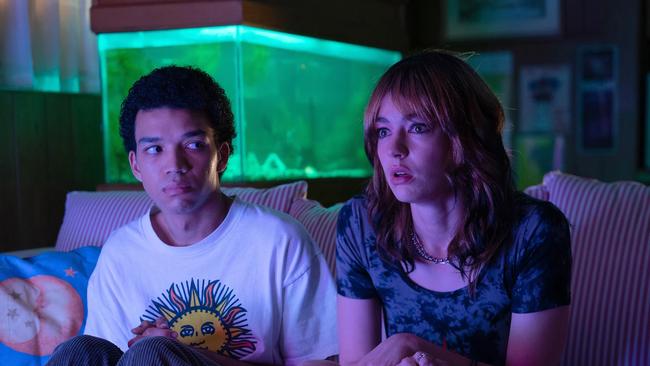
American director Jane Schoenbrun has spent the year leading up to the release of their second film, I Saw the TV Glow, talking things out with their therapist.
Schoenbrun first cracked the indie circuit in 2021, with the lo-fi We’re All Going to the World’s Fair. An internet horror made with a micro-budget of $100,000 and filmed mostly in the woods, with friends. That film — alien, cold, and eerily comforting in its solitude — is a fuzzed-out nightmare that told the story of a lonely teenager searching for connection through an online role-playing horror game. It didn’t explode on screens; rather, it was whispered into existence. It became a cult treasure, best discovered at night, alone, when the world feels most distant.
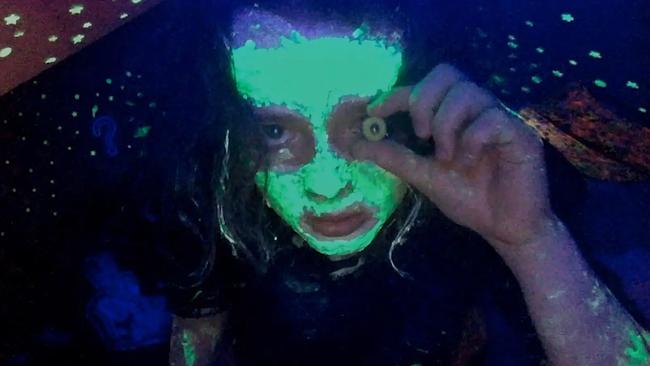
Now, with I Saw the TV Glow, Schoenbrun is stepping into a slightly brighter spotlight. The film, which landed in Australian cinemas this month, is backed by the indie powerhouse A24, who were behind the Oscar-dominating hit Everything Everywhere All At Once, and produced by A-lister Emma Stone and her husband Dave McCary to the tune of $10m.
It was a hit at festivals, packing out screenings at Sydney and Melbourne Film Festivals. For Schoenbrun, the hype feels foreign, and the stakes feel high. “I was really excited, but I was also terrified because it’s such a personal movie,” Schoenbrun tells The Australian over Zoom.
The strange and beautiful I Saw the TV Glow, like its predecessor, is about lonely teenagers finding themselves through the screen. It is also a refreshingly subtle transgender allegory, that ditches ham-fisted externalised tropes for something richer and more internal.
Set in the mid-90s, I Saw the TV Glow is too slippery a film to easily classify. Somewhere between horror and a coming-of-age drama, it follows Owen (Justice Smith) and Maddy (Brigette Lundy-Paine), two lonely, closed-off teenagers who bond over a shared obsession with the queer-coded monster-of-the-week TV show The Pink Opaque. It’s a little bit Buffy the Vampire Slayer, a little bit The X-Files, and the entire world for these two teens. For Owen and Maddy, it’s more than a television show; it’s a vision of an exit plan — a way out of their suburban suffocation.
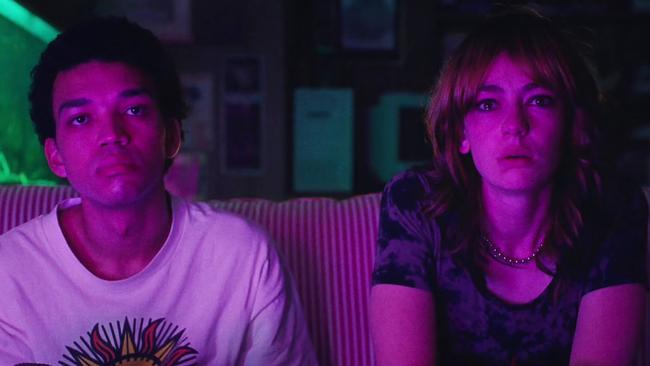
I Saw the TV Glow feels like a film pulled from the VHS era — but Schoenbrun’s nostalgia isn’t soft and inviting; it’s jagged and warped, tapping into the isolation of growing up queer in a world without a blueprint for self-discovery. “Growing up, the art that I cared for was the most primary emotional relationship in my life,” they reflect. “Whether it was music, television, or film, I clung to pieces of art in a way that was very personal.”
“I think the ephemerality of watching and the identity transfer that can happen between somebody and a screen are infinitely deep wells for me to journey down as an artist,” they say. “There are spaces, auras, and vibes that feel like places in my brain that are comforting to go. In many ways, this is a movie about going to those places and finding them. Like discovering a weird dive bar or goth club on the edge of town can feel comforting, or finding a strange transmission in the middle of the night on your television.”
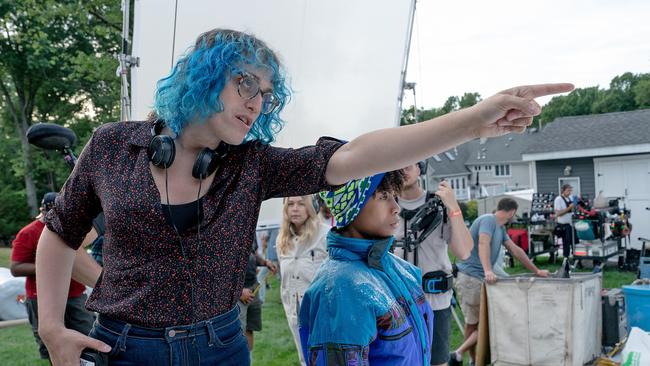
At its garbled heart, the film wrestles with the emotional intensity of being trans in a culture that still struggles to find the right language. “It’s a movie about the things as a trans person, that are not spoken about in mainstream culture often.”
It’s an isolation that Shoenbrun, who transitioned five years ago, understands intimately: “It’s exhausting and strange to be trans in the public eye,” Schoenbrun admits. “But it’s been really fun and validating and moving to talk to people about it.”
The relationship between audience and artist, and how each should engage with each other is complicated. As Schoenbrun puts it: “I’m not out here trying to be anyone’s therapist.” Still, at screenings of I Saw the TV Glow, lines of trans kids, often shaking and in tears, wait to talk to them. “The work has helped them on their own journeys in these really profound ways,” they say, pausing thoughtfully. “It’s so moving, and it’s like the relationship they have with the work is very different than the relationship with me. And it should be that way.”
While I Saw the TV Glow deals with gender, queerness, and identity, it also taps into something more universal: the desire to disappear into fiction. Schoenbrun nods toward the modern phenomenon of “ShiftTok” — a TikTok trend where teenagers believe they can transport themselves into alternate realities, like Hogwarts, to date Draco Malfoy. “It makes perfect sense to me that teenagers — especially non-normative, creative, or sensitive teenagers — want to escape this moment in history.”
As Schoenbrun’s profile grows, so too does their discomfort with the demands of being an artist in the public eye. How have they adapted? “By mostly hiding,” they say with a wry smile. They’ve retreated from New York City to the Hudson Valley, surrounding themselves with friends outside the film industry: “farmers, activists, and chefs who live a life that is very human.” It’s a way to protect their art, they say. “Promoting work within this capitalist machinery can be oppositional to the honest, vulnerable exploration that comes with creating.”
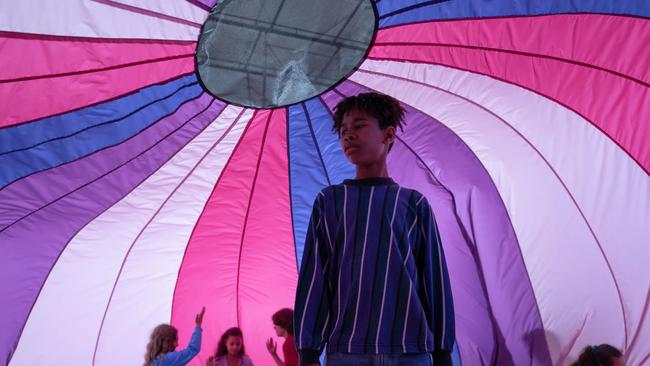
With a larger budget and backing of a major studio, artistic concessions had to be made. There’s an expository scene that Schoenbrun battled with, where gender-dysphoric Owen allows himself a moment of secret joy by trying on one of Maddy’s halter neck dresses. The director never had that experience, and while they are “protective of my own barometer of authenticity,” they recognise that for some trans people, clothing was an obsession as a child or young person.
“I knew if I’m going to try and make a movie with a real budget with a real studio, I needed to be making something that is a bit poppier. It’s a little bit louder and doesn’t have like, six-minute uninterrupted shots of characters just staring at the screen like my first movie did.”
Much of the hype surrounding I Saw the TV Glow is built on its killer soundtrack, that features a who’s who of left-field indie stars — Caroline Polachek, King Woman, Phoebe Bridgers, Drab Majesty. Schoenbrun curated an “interior goth club” playlist to guide the film’s contributors, which they see as a “companion guide” to the film — one designed to be obsessed over.
“I knew I wanted this to be a movie that could be embraced and obsessed over the way I obsessed over Donnie Darko as a kid,” says Schoenbrun. “So making a soundtrack and filling it with artists who I love, and who were writing the kinds of songs right now that made me feel things as a teenager felt like a beautiful way to expand the tone and aura of the movie onto another medium.”
Some of the artists featured on the soundtrack, such as Phoebe Bridgers with her former band Sloppy Jane, and King Woman, appear in the film, performing at a dive bar. It’s less Death Cab for Cutie in The OC, more Trent Reznor reigning hell in Twin Peaks: The Return.
Bridgers, who is one-third of the Grammy-winning trio Boygenius, is an artist that Schoenbrun bonded with over a shared love for the songwriter Elliott Smith. “I loved her from her first record, and it really felt like I was communing with somebody who loved Elliott Smith as much as me, and who had studied what she loved about Elliott Smith. There’s a comforting sadness that has always been there in her music, and I wanted that.”
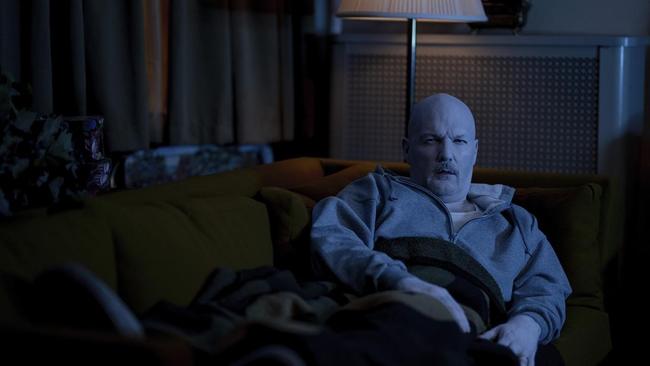
The most surprising musical cameo is a villainous turn from Fred Durst, frontman of the fratboy nü metal band Limp Bizkit, who are infamous for whipping the audience at Woodstock ‘99 into such a frenzy that it stoked a riot. Durst plays Owen’s stepfather and hardly utters a word in the film, save for the pivotal line, “Isn’t that a show for girls?” when dismissing The Pink Opaque.
“If there’s a villain in this movie, it’s Fred Durst’s glare. It’s this glare that traps Owen in a state of shame and steals much of his life from him. The fact that it was Fred Durst’s glare — rather than just some angry, masculine figure — was fascinating to me. Hopefully, it’s generative for audiences in the context of Limp Bizkit.”
I Saw the TV Glow also marks Schoenbrun’s second collaboration with the shaggy-dog indie rock star Alexander Giannascoli, or Alex G, returning to compose the score after We’re All Going to the World Fair. The two joined forces after Schoenbrun wrote him a fan letter. “24 hours later, he had watched the rough cut of the movie [We’re All Going to the World Fair] and was sending me demos for the score.”
“He said something nice to me — that we work well together because we both kind of want to ‘f--k it up.’ We both are not trying to make the best possible, cleanest pop song or horror movie. There’s something else in us that is more interested in breaking it while we’re building it.”
I Saw the TV Glow is in cinemas now

